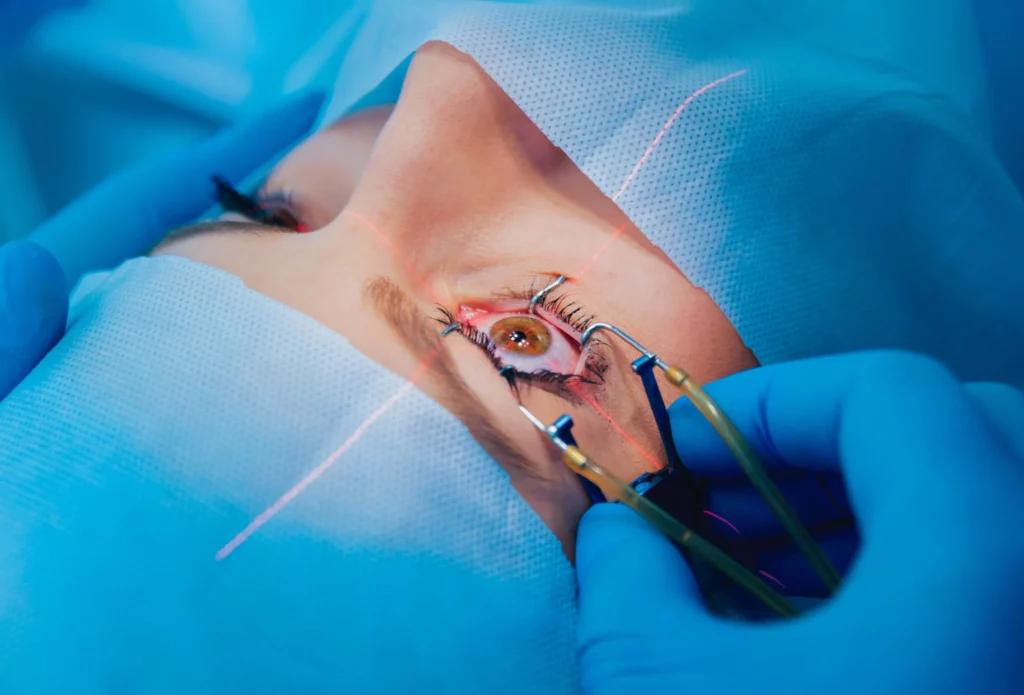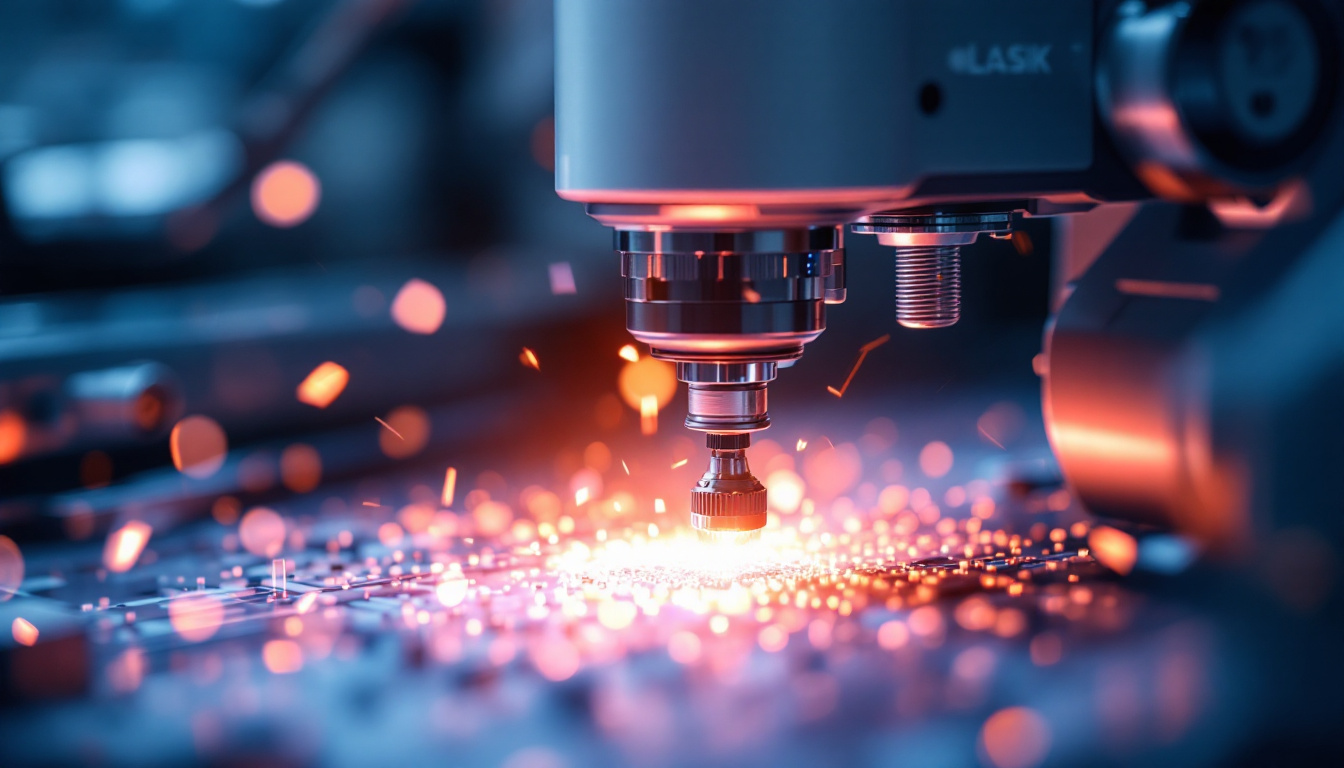Laser-Assisted In Situ Keratomileusis, commonly known as LASIK, is a revolutionary eye surgery that has transformed the treatment of refractive vision errors. By reshaping the cornea, LASIK allows individuals to achieve visual clarity without the reliance on glasses or contact lenses. This article delves into the science behind LASIK surgery, explaining its mechanisms, procedures, and advancements over time.
Understanding the Basics of LASIK Surgery
Before diving into the intricate details of the LASIK procedure, it is essential to grasp some foundational concepts about the surgery itself. LASIK is primarily designed to correct vision impairments caused by refractive errors, such as myopia (nearsightedness), hyperopia (farsightedness), and astigmatism. This innovative procedure has transformed the lives of millions, allowing individuals to enjoy a life free from the constraints of glasses and contact lenses.
Understanding the LASIK surgery procedure requires examining the preparatory steps leading up to surgery, as well as the operation itself. The process is streamlined to ensure patient safety and comfort.

The Role of the Cornea in Vision
The cornea is the transparent front part of the eye that plays a critical role in focusing light onto the retina. It is responsible for approximately 70% of the eye’s total optical power. A healthy, properly shaped cornea ensures that light rays are bent correctly, allowing for clear vision. However, any irregularities in the cornea’s shape can lead to blurred vision and other visual impairments. The cornea’s curvature can be influenced by genetic factors, environmental conditions, and even age, making it vital to maintain its health through regular eye check-ups and protective measures against UV light and injury.
What is Refractive Error?
Refractive errors occur when the eye cannot properly focus light onto the retina, leading to unclear vision. These errors can be classified into four main categories: myopia, hyperopia, astigmatism, and presbyopia. Each type of refractive error stems from variations in the eye’s structure, often related to the curvature of the cornea or the length of the eyeball. LASIK surgery aims to correct these errors by reshaping the cornea. The procedure utilizes advanced laser technology to precisely remove microscopic amounts of corneal tissue, allowing for a more accurate focus of light onto the retina. This reshaping process is tailored to the individual’s specific vision needs, making LASIK a highly personalized solution.
Understanding the nuances of these refractive errors is crucial for anyone considering LASIK. For instance, myopia can make distant objects appear blurry, while hyperopia can cause difficulty in focusing on close objects. Astigmatism, on the other hand, results from an uneven curvature of the cornea, leading to distorted or blurred vision at any distance. Presbyopia, commonly associated with aging, affects the ability to focus on near objects and typically begins to manifest in individuals over the age of 40. By addressing these issues, LASIK not only improves visual acuity but also enhances overall quality of life, enabling individuals to engage more fully in daily activities without the hindrance of corrective lenses.
The Science of LASIK: A Closer Look
LASIK surgery leverages advanced laser technology to reshape the cornea with precision. This section examines the underlying science that makes LASIK an effective solution for vision correction.

The Use of Laser Technology in LASIK
At the core of LASIK surgery is the use of excimer laser technology. This laser emits an ultraviolet light that can precisely remove microscopic layers of corneal tissue without affecting surrounding areas. This precision is crucial for reshaping the cornea and restoring clear vision. Over the years, advancements in laser technology have improved the accuracy and safety profiles of LASIK procedures, making them more accessible to patients. Additionally, the integration of wavefront technology has further enhanced the treatment by allowing for customized corrections based on the unique imperfections in a patient’s vision, leading to improved outcomes and reduced side effects.
The Process of Corneal Reshaping
The reshaping of the cornea during LASIK involves two primary steps. First, a thin flap is created on the surface of the cornea using either a microkeratome or a femtosecond laser. This flap is then lifted to expose the underlying corneal tissue. Next, the excimer laser is used to remove a predetermined amount of corneal tissue, effectively reshaping the cornea to correct the refractive error. Finally, the flap is laid back into position, where it adheres without the need for stitches. This minimally invasive approach not only reduces recovery time but also minimizes discomfort, allowing patients to return to their daily activities almost immediately. Moreover, the entire procedure typically lasts less than 30 minutes, making it a convenient option for those seeking vision correction.
In addition to the technical aspects of the procedure, patient selection plays a critical role in the success of LASIK. Ideal candidates are generally over the age of 18, have stable vision for at least a year, and possess a cornea that is thick enough to withstand the reshaping process. Pre-operative assessments, including detailed eye examinations and discussions about medical history, ensure that patients are well-informed and prepared for the procedure. Understanding the science behind LASIK not only demystifies the process but also empowers patients to make educated decisions about their vision correction options. Read more about demystifies on https://ukings.ca/events/demystifying-university/
The LASIK Procedure: Step by Step
Pre-Surgery Evaluations and Preparations
Prior to LASIK surgery, patients undergo a comprehensive eye examination to determine their suitability for the procedure. This evaluation includes detailed tests of visual acuity, corneal thickness, and overall eye health. The surgeon will also review the patient’s medical history and discuss expectations and potential risks associated with LASIK. Once deemed suitable, patients are instructed on pre-operative care, including avoiding contact lenses and certain medications. It is crucial for patients to follow these guidelines closely, as wearing contact lenses can alter the shape of the cornea and affect the accuracy of the measurements taken during the evaluation. Additionally, patients may be advised to arrange for transportation to and from the clinic, as the effects of the sedative and the procedure itself can leave them temporarily disoriented.
Learn more at: How to Find the Best LASIK Surgery Provider in Sydney
The LASIK Operation: What Happens During Surgery
The LASIK surgery typically takes around 15 to 30 minutes for both eyes. Once in the surgery room, the patient may receive a mild sedative to help alleviate anxiety. After the eye is numbed using anesthetic drops, the surgeon will create the corneal flap and perform the laser treatment. Throughout the procedure, patients are kept comfortable and are usually able to return home shortly after the operation is completed. During the laser treatment phase, which usually lasts only a few minutes, the laser reshapes the cornea to correct refractive errors such as myopia, hyperopia, or astigmatism. Patients may hear a clicking sound from the laser and see a series of lights, but the experience is generally painless. After the surgery, patients are provided with protective eyewear and specific aftercare instructions to ensure optimal healing. Follow-up appointments are scheduled to monitor recovery and assess the improvement in vision, as many patients experience significant visual clarity within just a few hours post-surgery.
Post-Surgery: What to Expect After LASIK
The post-operative phase is an essential aspect of the LASIK experience. Understanding what to expect can alleviate concerns and lead to a smoother recovery.
Immediate Post-Surgery Experience
Immediately following the surgery, patients may experience mild discomfort, light sensitivity, or blurred vision. These symptoms typically subside within a few hours. Post-operative instructions include using prescribed eye drops, resting, and avoiding strenuous activities for a short period. Most patients notice an improvement in their vision within the first 24 to 48 hours. It is also advisable to have a trusted friend or family member accompany you home, as your vision may be temporarily impaired and you might feel a bit disoriented after the procedure. This support can help ease the transition back to your normal routine.
Long-Term Results and Potential Side Effects
Long-term outcomes of LASIK are generally positive, with many patients achieving 20/25 vision or better. However, it is crucial to be aware of potential side effects, such as dry eyes, glare, or halos. These issues generally resolve over time but may require additional treatment in some cases. Regular follow-up appointments with an eye care professional are essential to monitor recovery and address any concerns. In addition to these side effects, some patients may experience fluctuations in their vision, especially during the first few weeks post-surgery. This is a normal part of the healing process, and most individuals will find their vision stabilizes as their eyes adjust to the changes. Staying hydrated and using artificial tears can help alleviate some of these discomforts, making the recovery process more manageable.
The Evolution of LASIK Technology
The history of LASIK surgery reflects significant advancements in both technology and techniques. Understanding this evolution provides insight into how LASIK has become a mainstream option for vision correction.
The Journey from Radial Keratotomy to LASIK
The journey of LASIK began with radial keratotomy (RK), a surgical technique used in the 1980s. RK involved making radial cuts in the cornea to flatten its curvature. Although effective for some patients, it had limitations related to predictability and long-term results. The introduction of laser technology paved the way for LASIK, allowing for more precise corrections and reducing the risks associated with manual cutting. The first LASIK procedures were performed in the early 1990s, utilizing excimer lasers that could reshape the cornea with remarkable accuracy. This shift not only improved outcomes but also significantly reduced recovery times, allowing patients to return to their daily activities much sooner than with RK. Click here to find more about accuracy.
Future Innovations in LASIK Surgery
As technology continues to advance, future innovations in LASIK surgery are promising. Developments in Custom LASIK, which tailors the procedure to individual corneal shapes, and enhancements in diagnostic tools are on the horizon. Additionally, researchers are exploring novel methods to address age-related vision changes, expanding the applicability of LASIK to a broader patient demographic. The future of LASIK looks bright, paving the way for even safer and more efficient vision correction methods. One exciting area of research involves the integration of artificial intelligence in pre-operative assessments, which could lead to even more personalized treatment plans. Furthermore, advancements in femtosecond laser technology are enabling surgeons to perform flapless LASIK procedures, which may further minimize complications and improve patient outcomes. As these innovations unfold, they hold the potential to redefine the landscape of vision correction, making LASIK an even more accessible option for those seeking freedom from glasses and contact lenses.
